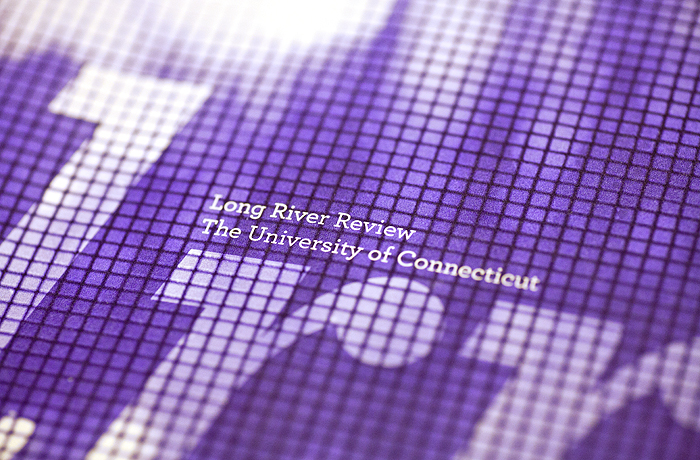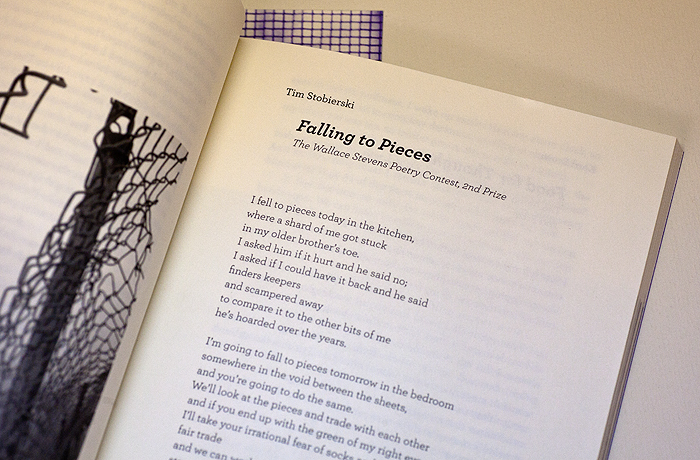
When students want to become doctors, they take science courses. When they want to be lawyers, they take law courses; journalists, journalism courses. But what about students interested in becoming editors or publishers of literary magazines? At the University of Connecticut these students take English 3713: Literary Magazine Editing, which allows them to edit and produce UConn’s literary journal Long River Review.
The course was developed by Penelope Pelizzon, associate professor of English, when she came to UConn in 2002 as the director of the Creative Writing Program. It has since been taught annually on a rotating schedule either by Pelizzon or the co-director of creative writing, assistant professor of English Ellen Litman.
Twenty-eight years ago a small group of students at UConn dedicated to producing quality literature created a literary journal called Writing UConn: fiction, essays, poetry, which printed works written by UConn students. It was produced by hand, had a small print run, and served as the creative voice for the University for almost 15 years, at which point it morphed into the Long River Review.
“When I started here at UConn, I met with the editors of the Long River Review and they made it very clear to me that they were attached to the journal,” says Pelizzon, “and that it was an integral part of their creative writing experience.”
Believing that the journal should stay central to the Creative Writing Program, Pelizzon undertook the job of giving the Long River Review a formal class structure.
“There was this great teaching opportunity available through the journal that just wasn’t being used, and it seemed easy and productive to turn it into a class,” she says.
Enrollment in the course is highly selective, capped at just 15. Students interested in working on the journal must formally apply for the class. They are then interviewed, and those selected are given a position on the editorial board. Originally the board included genre editors for poetry, fiction, and creative nonfiction; a managing editor; a copy editor; and an editor-in-chief. Recent years have seen the addition of new positions including translations editor, interviews editor, and a director of public relations.

Through the course, the editors work to select the pieces of student-written poetry, fiction, and creative nonfiction that will go into each issue. The works chosen are then subjected to a vigorous copy-editing procedure in which each editor participates.
“It’s an intense class,” says Rachel Madariaga, CLAS ’11 who worked on the journal throughout her four undergraduate years. “You learn so much in what is really a small period of time. And by the end of the semester you’ve actually created a professional piece of literature that showcases the incredible talent of the UConn community. There’s no better feeling.”
All the while students are producing the journal, they are also learning about the history of literary journals, the evolution that the industry has gone through over time, and different modes of marketing and publicity.
One project involves students breaking into groups in order to perform “guerilla art” that publicizes the release of the journal. In past years this has involved painting the rock by the North Parking Garage, handing out fortune cookies filled with lines of poetry, and setting up outdoor living-rooms where students could familiarize themselves with past issues of the journal.
“The class is different from most other academic classes at UConn,” says Madariaga. “Each year brings challenges to be overcome, some expected, others not. It allows you to discover whether or not you have the passion required to go into publishing.”
The English course is taught in conjunction with a course offered by the School of Fine Arts’ Design Center, which handles all of the visual aspects of creating the journal. Students in that class, advised by associate professor Edvin Yegir, design cover art, maintain the journal’s website, develop the journal’s layout, and choose all the artwork that will be featured in each issue.
The Long River Review just released its Spring ’11 issue, which is available at the UConn Co-op. Any students interested in taking the course, which is offered in the spring semester, should contact Penelope Pelizzon or Ellen Litman when classes resume in the fall to begin the application process.


